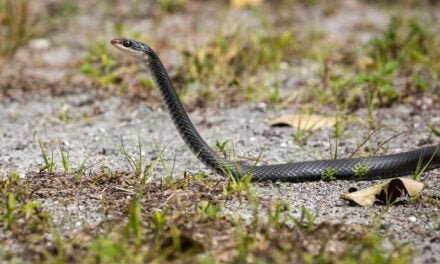White-lipped pythons are beautiful and intelligent snakes, but they can also be quite large and active. This means that it is important to provide them with a spacious and well-appointed terrarium. The White-Lipped Python, scientifically known as Leiopython albertisii, is a captivating and vibrant snake species native to New Guinea and some surrounding islands.
Its stunning coloration and unique characteristics have made it an appealing choice for reptile enthusiasts. However, the decision to bring a White-Lipped Python into your home should not be taken lightly. In this blog, we’ll explore the qualities of White-Lipped Pythons as pets and help you determine if they are a good fit for you.
Here is a guide on how to set up a terrarium for your white-lipped python:
Enclosure size
The minimum enclosure size for a white-lipped python is 7 feet long, 3 feet wide, and 4 feet high. However, larger is always better, especially for adult snakes.
Enclosure type
There are two main types of enclosures that can be used for white-lipped pythons: glass and wood. Glass enclosures are easier to clean and observe the snake, but they can also be more expensive and difficult to set up. Wood enclosures are more affordable and easier to customize, but they can be more difficult to clean and may not provide as good of a view of the snake.
Heating and lighting
White-lipped pythons are native to a tropical climate, so they require a warm and humid environment. The basking spot in the terrarium should be 88-92 degrees Fahrenheit, and the cool side should be 75-82 degrees Fahrenheit. The humidity in the terrarium should be kept between 55-85%.
To provide heat for your snake, you can use a halogen heat lamp or a ceramic heat emitter. Heat lamps should be placed on the top of the terrarium, and ceramic heat emitters can be placed inside or outside of the terrarium.
To provide lighting for your snake, you can use a fluorescent bulb. Fluorescent bulbs provide UVB light, which is essential for snakes to synthesize vitamin D3.
Substrate
The substrate in the terrarium should be able to hold moisture and provide a soft place for the snake to burrow. Some good substrate options for white-lipped pythons include:
- Coconut coir
- Cypress mulch
- Aspen bedding
- Paper towels
Hides
White-lipped pythons are semi-arboreal snakes, so they need to have both ground hides and arboreal hides. Ground hides can be made from PVC pipes, cardboard boxes, or commercial snake hides. Arboreal hides can be made from branches, logs, or commercial snake hammocks.
Water dish
White-lipped pythons need to have access to fresh water at all times. The water dish should be large enough for the snake to soak its entire body in.
Other decorations
In addition to the hides and water dish, you can also add other decorations to your snake’s terrarium. Some popular decorations include:
- Branches
- Logs
- Rocks
- Artificial plants
Cleaning
The terrarium should be spot cleaned daily and completely cleaned once a week. Spot cleaning involves removing any waste products or uneaten food from the terrarium. Complete cleaning involves removing all of the substrate and cleaning the terrarium with a disinfectant solution.
Tips for setting up a white-lipped python terrarium:
- Make sure that the terrarium is secure and that the snake cannot escape.
- Place the terrarium in a quiet location out of direct sunlight.
- Monitor the temperature and humidity in the terrarium regularly.
- Provide your snake with a variety of hides to choose from.
- Clean the terrarium regularly.
Beautiful but Challenging
White Lipped Pythons are renowned for their striking appearance. They possess a glossy black body adorned with bright white or pale blue stripes, creating a truly captivating contrast. These snakes are relatively small, growing to an average length of about 4 to 5 feet, which makes them more manageable than some of their larger python relatives.
However, their beauty is matched by their challenging nature. White-Lipped Pythons are known for being more aggressive and territorial compared to other snake species kept as pets. Their feisty disposition can make handling them a potentially stressful and even risky experience for both the snake and the owner.
Complex Care Requirements
Another factor that makes White-Lipped Pythons less than ideal for novice reptile keepers is their specific care requirements. These snakes need meticulous attention to their habitat, diet, and overall health.
- Enclosure: White Lipped Pythons require a spacious, escape-proof enclosure with ample vertical space to accommodate their semi-arboreal nature. Ventilation is crucial to maintain the right humidity levels, and a secure lid is essential to prevent escapes. These snakes are agile climbers and can be quite adept at escaping from improperly secured enclosures.
- Temperature and Humidity: White Lipped Pythons require a thermal gradient within their enclosure, with a hot basking spot around 85-88°F (29-31°C) and a cooler area around 78-80°F (25-27°C). The humidity should be maintained around 60-70%. Achieving and maintaining these parameters can be challenging and requires consistent monitoring.
- Diet: In the wild, White-Lipped Pythons primarily feed on birds and their eggs. In captivity, they can be fed a diet of rodents. However, getting them to accept this diet can be problematic. Many White-Lipped Pythons are notoriously finicky eaters, and it can be a challenge to find a consistent food source that they will readily consume.
Aggressive Behavior and Handling Challenges
White-Lipped Pythons have a reputation for their feisty and defensive nature. When cornered or threatened, they may exhibit aggressive behavior, which can include striking, hissing, and biting. Handling these snakes can be a stressful experience, especially for those new to snake husbandry. The combination of their temperament and agility makes them more suitable for experienced snake keepers who are comfortable with handling potentially unpredictable snakes.
Lack of Domestication
One essential aspect to consider when choosing a pet snake is whether the species has been successfully domesticated. Domesticated snakes are more likely to thrive in captivity, adapt to human interaction, and have predictable behaviors. White Lipped Pythons, like many other exotic snake species, are not domesticated. They retain their wild instincts and are less inclined to tolerate regular handling and interaction with humans.
Conservation Considerations
It’s also worth noting that the demand for White Lipped Pythons in the pet trade has led to concerns about their wild populations. Overcollection for the pet trade can put stress on these snakes’ natural habitats and may negatively impact their populations. Responsible pet ownership includes being mindful of the conservation status of the animals you choose to keep as pets.





